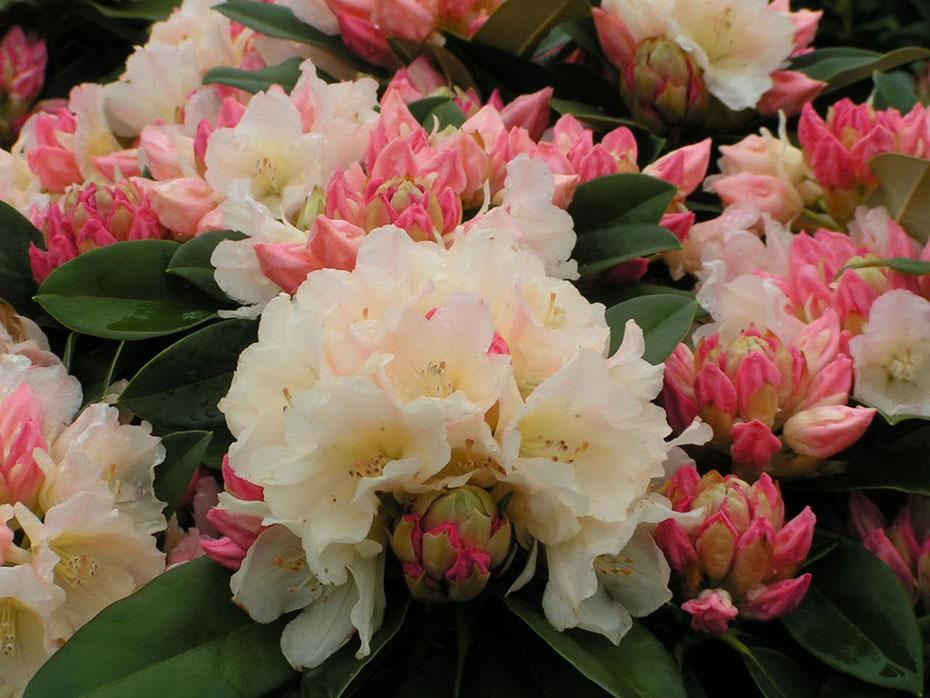Scale insects result in sooty mould on leaves and poor growth
What do they look like?
They appear as little brown, white or yellow patches on the underside of leaves and down the stems. They feed on the sap and affect a wide range of plants. The first signs are often a black sooty mould on the leaves, this blocks the plants pores and by stopping sunlight reaching the leaves prevents photosynthesis. The sooty mould is caused by a fungi growing on the sticky honeydew which the insects produce. Outdoor plants with tough leathery leaves such as rhododendrons, azaleas and camellias seem to be particularly at risk, so keep an eye on these plants as it's much easier to get rid of them when there are only a few rather than when they are heavily infested.
How do I get rid of them?
Outdoor plants
It may be necessary to wash the sooty fungus off first in order for any treatment to reach the insects. Wash off with a mixture of washing-up liquid and warm water or spray with a fungicide.
If there is a heavy infestation it may be necessary to prune out the infected branches and then burn them.
Natural predators such as parasitic wasps or ladybirds can be applied directly to the plant.
Spray with a mild solution of washing-up liquid and tepid water, 2 tablespoons of washing-up liquid to a gallon of water. Coat both sides of the leaves and the stems. This can take up to a month to take effect, with regular applications.
Scrub off with a toothbrush using the soap solution as described above.
Spray with systemic insecticide or neem oil.
Indoor plants
Pick off by hand and destroy.
Introduce a natural predator such as parasitic wasps or ladybirds.
Dab each insect with a cotton bud soaked in alcohol. This is only useful if the infestation is light.
Spray with a mixture of washing-up liquid and tepid water, as described for outdoor plants.
Spray with systemic insecticide or neem oil.
It is important to isolate infected plants so the insects don’t spread.
Plants can be put outside in summer for the birds to pick off the insects.




![Kingsbury-bench-05[1].jpg](http://www.hayesgardenworld.co.uk/cdn/shop/files/Kingsbury-bench-05_5B1_5D.jpg?v=1712162737&width=1500)
![Kingsbury-bench-01[1].jpg](http://www.hayesgardenworld.co.uk/cdn/shop/files/Kingsbury-bench-01_5B1_5D.jpg?v=1712161065&width=1500)
![tw17a-4947_0[1].jpg](http://www.hayesgardenworld.co.uk/cdn/shop/files/tw17a-4947_0_5B1_5D.jpg?v=1712161495&width=1500)
![tw17a-4947_tenbury_5ft[1].jpg](http://www.hayesgardenworld.co.uk/cdn/shop/files/tw17a-4947_tenbury_5ft_5B1_5D.jpg?v=1712161172&width=1500)
![tw17a-4952_tenbury_4ft[1].jpg](http://www.hayesgardenworld.co.uk/cdn/shop/files/tw17a-4952_tenbury_4ft_5B1_5D.jpg?v=1712161034&width=1500)
![thumbnail_IMG_1565-kik_2[1].jpg](http://www.hayesgardenworld.co.uk/cdn/shop/files/thumbnail_IMG_1565-kik_2_5B1_5D.jpg?v=1712226536&width=1500)
![thumbnail_IMG_1565-kik_1[3].jpg](http://www.hayesgardenworld.co.uk/cdn/shop/files/thumbnail_IMG_1565-kik_1_5B3_5D.jpg?v=1712159637&width=1500)



![WD-XgESA[1].jpeg](http://www.hayesgardenworld.co.uk/cdn/shop/files/WD-XgESA_5B1_5D.jpg?v=1712159609&width=1500)